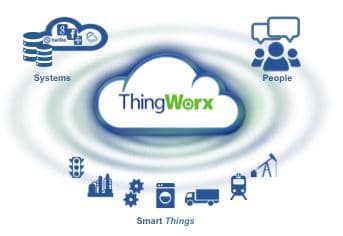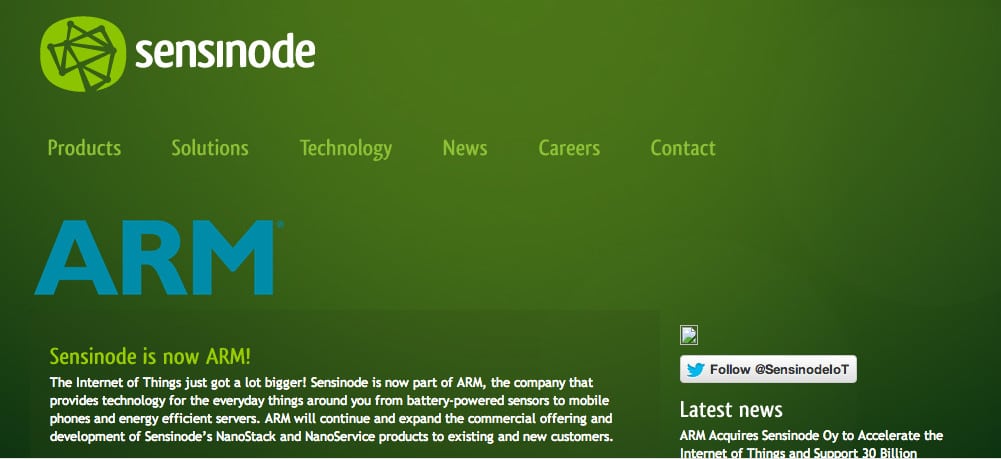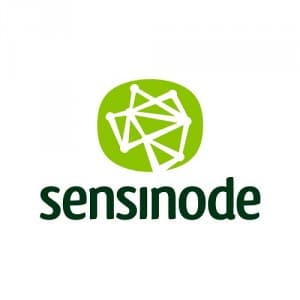Steve Ranger over at ZDNet has an interesting write-up on HyperCat, a UK-funded data sharing open specification for Internet of Things devices. The new specifications has the backing (or at least interest) of major players and could become an alternative to proprietary standards such as Apple’s HomeKit or Google Nest. HyperCat is described as an “open, lightweight, JSON-based hypermedia catalogue” that is designed to “expose information about IoT assets over the web.” The goal is to provide a set of open APIs and data formats that startups and other smaller firms can use to built ecosystems of connected objects. Smart devices are typically developed using common technologies and platforms: RESTful APIs, JSON (Javascript Object Notation) for data formatting and HTTP (or secure HTTP) as the main communications protocol. However, the Internet of Things is badly “silo’d” – meaning that interoperability between IoT devices happens only when those smart devices happen to use the […]
ARM
ThingWorx Says IoT Marketplace Will Speed Adoption
ThingWorx, the ‘platform as a service’ (PaaS) vendor, has made empowering the Internet of Things (or Internet of Everything) its rallying cry. Now the company says it is the first to market with an IoT “marketplace” that it claims will speed development of smart, connected products. The company announced ThingWorx Marketplace at Salesforce.com’s “Dreamforce” event in San Francisco on Monday. The new platform will allow ThingWorx and third party firms to offer “components and services” that are needed to build full-featured IoT applications. Those may be things like new kinds of sensors, widgets, device connectors, protocol adapters, hooks into device clouds or integrations with enterprise management platforms, according to a ThingWorx statement. The platform will be accessible by ThingWorx partners, independent hardware and software vendors, and third party developers, the company said. Enterprises will be able to deploy private instances of the Marketplace to host internally developed applications, application templates, analytics, […]
iPhone’s Touch ID Gives A Big Boost To Biometrics
Apple Corp. introduced the latest versions of its iPhone mobile phone yesterday to great fanfare, though the fever pitch that was common during the reign of Steve Jobs was noticeably absent. There were a flurry of articles and opinion pieces like this one, wondering whether Apple had lost its mojo, were common. And it goes without saying that if the headline is wondering whether you’ve lost your mojo, then you most certainly have. Still, Apple didn’t disappoint with its iPhone and iOS updates, particularly in the security arena. Indeed, the long-rumored addition of a finger print reader may have been the most prominent new feature in an update where the most prominent changes (a faster, 64-bit processor, higher resolution camera, etc. ) were transparent to the user. So what do you need to know about the new iPhone and its biometric authentication feature? And how will the new iPhone 5S […]
That ARM-Sensinode Buy: What Does It Mean For Security And IoT?
We wrote last week about the decision of chip-maker ARM to buy the small(ish) Finnish software maker Sensinode Oy, which has become a big player in the market for software that runs low power devices like embedded sensors. The deal makes sense at the 100,000 foot level – ARM makes chips that power embedded devices, Sensinode makes the software that is powered by them. Perfect. But the deal actually works at a bunch of different levels, as I learned from a conversation with Michael Koster, the co-founder and lead architect at the group The Open Source Internet of Things (OSIOT). Koster is an authority on The Internet of Things and has helped create open-source toolkits and APIs that promote interaction among intelligent devices. Koster said that ARM’s purchase of Sensinode is as much about both firms’ investment in emerging IoT standards for low-powered, intelligent devices like Constrained Application Protocol (CoAP) […]
ARM Buys Software Maker Sensinode To Spur IoT Development
We have noted before how the lack of cross-industry standards (including those governing security) is a major stumbling block to the Internet of Things. This is especially true in the enterprise space, where the security of data that might be passed between Internet-connected devices is paramount, but not well addressed by the current generation of (PC-centric) security products. As with so much in the fast-emerging Internet of Things, change on this score will come from unlikely places, as we see with the news today about ARM acquiring the Finnish software maker Sensinode Oy – a major player in the market for software to power connected devices. The news, which was announced on Tuesday, will join ARM – a leading maker of chips that power mobile devices – with Sensinode, which has pioneered software and software standards for low-power devices used in everything from mobile phones and tablets to wearable computing. Following […]



